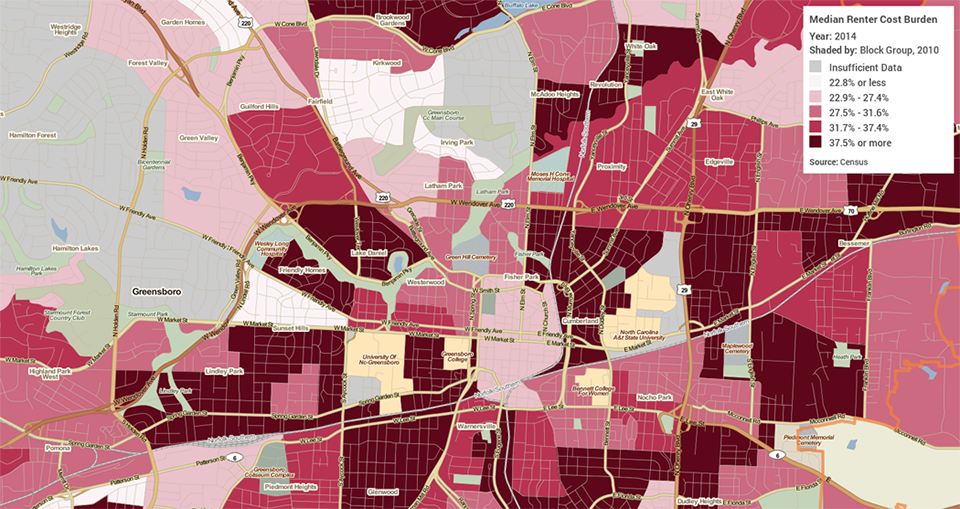On October 4, 2016, CHCS Director Stephen Sills penned a column for Yes! Weekly:
“North Carolina is now the ninth most populous state in the country. Over the course of the last decade, the population growth has been twice that of the nation. The 12-county region of the Piedmont Triad has grown to a population that now exceeds 1.6 million residents. At the heart of the Piedmont is one of the most sprawling metropolitan areas in the country. The Greensboro-Winston-Salem–High Point Combined Statistical Area (CSA) covers an area of nearly 1,000 square miles. At its heart is Greensboro, with a population of about 282,000; the third-largest city by population in North Carolina. Between the 2000 and 2010 census, the City of Greensboro grew 20.4 percent. This population growth, largely driven by working-aged and retired adults moving from other US cities to North Carolina, has created considerable pressure on the local housing market. The result is sustained (and post-recession rebounding) market values of most single-family homes, rising rental prices and construction of new high-rent housing for students and professionals.
“The rental market has been especially strained as moderate and low-income homeowners lost their homes to foreclosures during the recession. Now nearly half of households in Greensboro are renters and, according to data from the U.S. Census Bureau, there is a shortfall between rental supply and demand. This demand has driven the rental vacancy rate down from a 2008 high of 14.6% to just 8.8% in 2014, the lowest it’s been in over a decade. In other words, 93 percent of available rental units are occupied at any given time, resulting in very little selection for apartment seekers and the ability for landlords to charge a premium for their properties. With such a tight market, there is little incentive for landlords to discount rents or even spend extra on maintaining low-rent units. There is always a renter to fill a vacancy.”
